Xylitol is it safe. Xylitol: Uses, Benefits, and Potential Risks of This Natural Sweetener
What is xylitol and how is it used. Is xylitol safe for consumption. What are the potential benefits and risks of xylitol. How does xylitol compare to other sweeteners. Can xylitol help prevent cavities and ear infections.
What is Xylitol and How is it Produced?
Xylitol is a natural sugar alcohol found in various plants, fruits, and vegetables. It belongs to a class of compounds known as sugar alcohols or polyols. Xylitol has a chemical structure that resembles a hybrid between sugar and alcohol, though it is neither in the strictest sense.
How is xylitol produced commercially? The majority of xylitol is extracted from birch trees, though it can also be derived from other sources like corncobs. The production process involves:
- Extracting xylan (a type of hemicellulose) from plant material
- Hydrolyzing xylan into xylose
- Catalytically hydrogenating xylose to produce xylitol
- Purifying and crystallizing the final product

This natural sweetener has gained popularity due to its unique properties and potential health benefits. But what exactly makes xylitol stand out among other sugar substitutes?
The Sweet Science: Xylitol’s Unique Properties
Xylitol possesses several characteristics that make it an attractive alternative to traditional sugar:
- Sweetness: Xylitol is nearly as sweet as sucrose (table sugar), with about 95% of the sweetness
- Calorie content: It contains approximately 2.4 calories per gram, compared to 4 calories per gram in sugar
- Glycemic index: Xylitol has a very low glycemic index of 7, compared to 65 for table sugar
- Dental benefits: Unlike sugar, xylitol does not feed oral bacteria, potentially reducing tooth decay
These properties have led to xylitol’s widespread use in various products, from sugar-free gum to oral care items. But how does xylitol affect our bodies when consumed?
Xylitol and Blood Sugar: A Diabetic-Friendly Option?
For individuals with diabetes or those monitoring their blood sugar levels, xylitol presents an intriguing option. How does xylitol impact blood glucose?
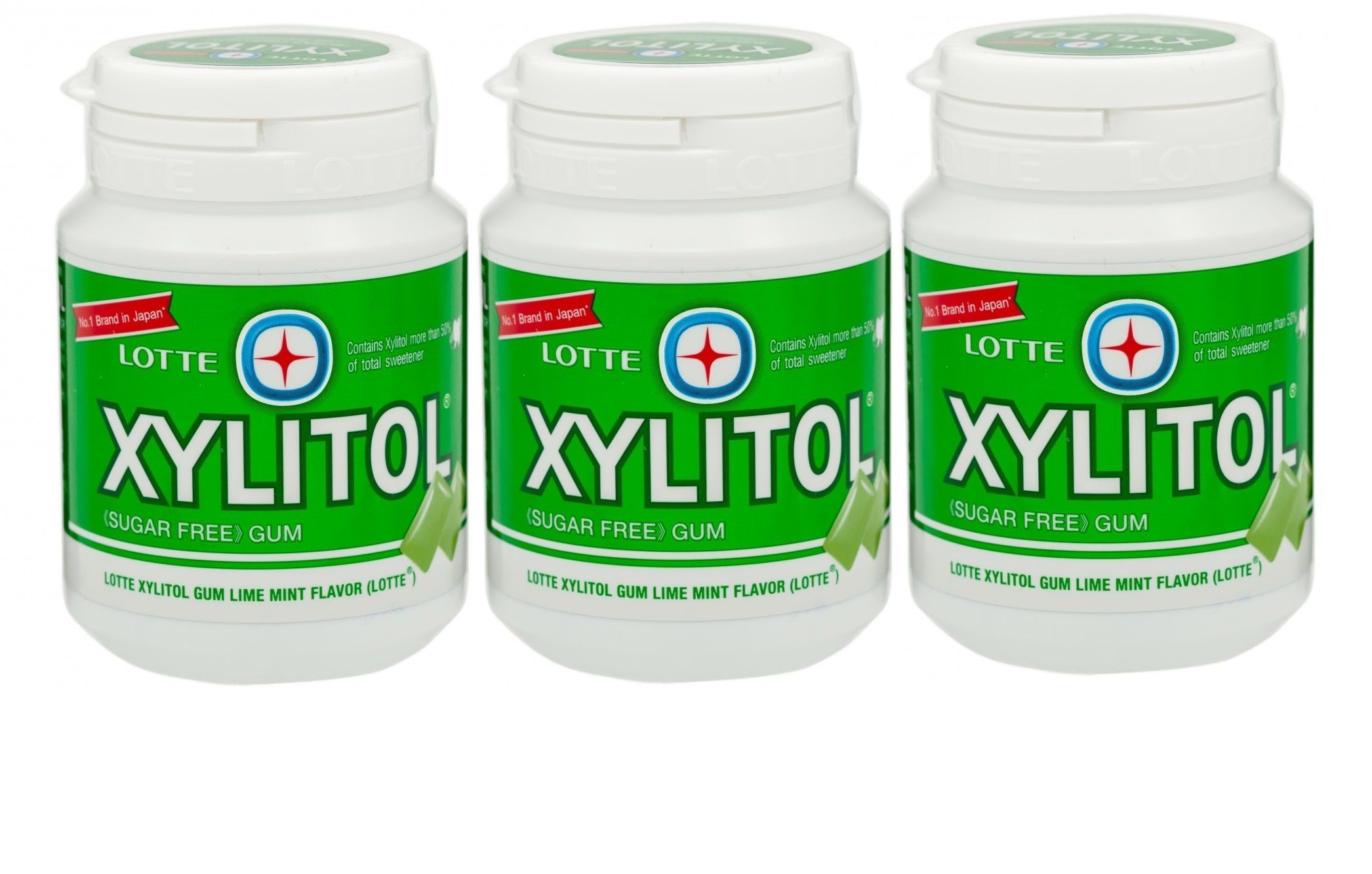
Unlike regular sugar, xylitol is absorbed more slowly by the body. This results in a significantly reduced impact on blood sugar levels compared to sucrose. The body does not require insulin to metabolize xylitol, making it a potentially suitable sweetener for people with diabetes or insulin resistance.
However, it’s crucial to note that while xylitol may be a better option than sugar for diabetics, it should still be consumed in moderation. Consulting with a healthcare professional is advisable before making significant dietary changes.
Xylitol vs. Other Sugar Substitutes
How does xylitol compare to other popular sugar alternatives? Here’s a brief comparison:
- Stevia: Zero calories, but may have an aftertaste
- Aspartame: Zero calories, but controversial due to potential health concerns
- Erythritol: Similar to xylitol, but with fewer calories and less digestive issues
- Monk fruit: Zero calories, but can be expensive and hard to find
Each sweetener has its pros and cons, and the choice often comes down to personal preference and individual health considerations.

Dental Health: Can Xylitol Prevent Cavities?
One of the most well-documented benefits of xylitol is its potential to promote dental health. How exactly does xylitol contribute to oral hygiene?
Xylitol works in several ways to protect teeth:
- Bacteria inhibition: Oral bacteria cannot metabolize xylitol, reducing their ability to produce acid that erodes tooth enamel
- Saliva stimulation: Xylitol increases saliva production, which helps neutralize acids and remineralize teeth
- Plaque reduction: Regular use of xylitol can decrease the formation of dental plaque
Studies have shown that consistent use of xylitol-containing products, such as chewing gum or toothpaste, can significantly reduce the risk of cavities in both children and adults. The U.S. Food and Drug Administration (FDA) has even approved claims stating that xylitol-containing foods may reduce the risk of tooth decay.
Recommended Usage for Dental Benefits
To maximize the dental benefits of xylitol, experts often recommend consuming 6-10 grams per day, ideally spread across 3-5 exposures. This can be achieved through:
- Chewing xylitol-sweetened gum after meals
- Using xylitol-containing toothpaste and mouthwash
- Consuming xylitol-sweetened candies or mints
It’s important to note that while xylitol can be a valuable tool in maintaining oral health, it should not replace regular brushing, flossing, and dental check-ups.

Xylitol and Ear Infections: A Promising Connection
Beyond its dental applications, xylitol has shown potential in preventing ear infections, particularly in children. How might xylitol help reduce the occurrence of otitis media?
Research suggests that xylitol may help prevent ear infections through several mechanisms:
- Bacterial inhibition: Xylitol may inhibit the growth of bacteria that commonly cause ear infections
- Biofilm disruption: It may interfere with the formation of bacterial biofilms in the ear
- Improved eustachian tube function: Xylitol might enhance the function of the eustachian tubes, which connect the middle ear to the back of the throat
Studies have shown promising results, with regular xylitol consumption reducing the risk of ear infections in children by up to 30%. However, it’s important to note that more research is needed to fully understand the effectiveness of xylitol in preventing ear infections and to determine optimal dosing strategies.
Safety Considerations: Is Xylitol Right for Everyone?
While xylitol is generally considered safe for human consumption, there are some important safety considerations to keep in mind. Are there any potential side effects or risks associated with xylitol use?

For most people, xylitol is well-tolerated when consumed in moderation. However, some individuals may experience:
- Digestive discomfort: Consuming large amounts of xylitol (typically over 30-40 grams per day) can lead to bloating, gas, or diarrhea
- Laxative effect: Like other sugar alcohols, xylitol can have a mild laxative effect in some people
To minimize these effects, it’s recommended to start with small amounts of xylitol and gradually increase intake over time. This allows the body to adjust and can help reduce the likelihood of digestive issues.
Special Populations and Xylitol Use
Certain groups should exercise caution when considering xylitol use:
- Pregnant and breastfeeding women: While no adverse effects have been reported, there is limited research on xylitol use during pregnancy and lactation
- Individuals with certain medical conditions: People with irritable bowel syndrome (IBS) or fructose malabsorption may be more sensitive to xylitol’s effects
- Children under 3 years old: Xylitol products should be used under adult supervision to prevent choking hazards
As with any dietary supplement or significant change in diet, it’s advisable to consult with a healthcare professional before incorporating xylitol into your routine, especially if you have any pre-existing health conditions.

The Canine Conundrum: Xylitol Toxicity in Dogs
While xylitol is safe for human consumption, it poses a serious threat to our canine companions. Why is xylitol toxic to dogs?
In dogs, xylitol triggers a rapid release of insulin, leading to a dangerous drop in blood sugar levels (hypoglycemia). This can occur even with small amounts of xylitol. Additionally, some dogs may develop liver failure after ingesting xylitol.
Symptoms of xylitol toxicity in dogs can include:
- Vomiting
- Lethargy
- Loss of coordination
- Seizures
- Collapse
If you suspect your dog has consumed xylitol, it’s crucial to seek immediate veterinary care. The prognosis is generally good if treatment is initiated quickly, but delays can lead to severe complications or even death.
Preventing Xylitol Poisoning in Dogs
To protect your canine companions:
- Keep xylitol-containing products out of reach
- Read labels carefully, as xylitol is present in many sugar-free products
- Inform family members and guests about the dangers of xylitol for dogs
- Consider using alternative sweeteners in homemade treats that may be shared with pets
By being vigilant and informed, you can enjoy the benefits of xylitol while keeping your furry friends safe.
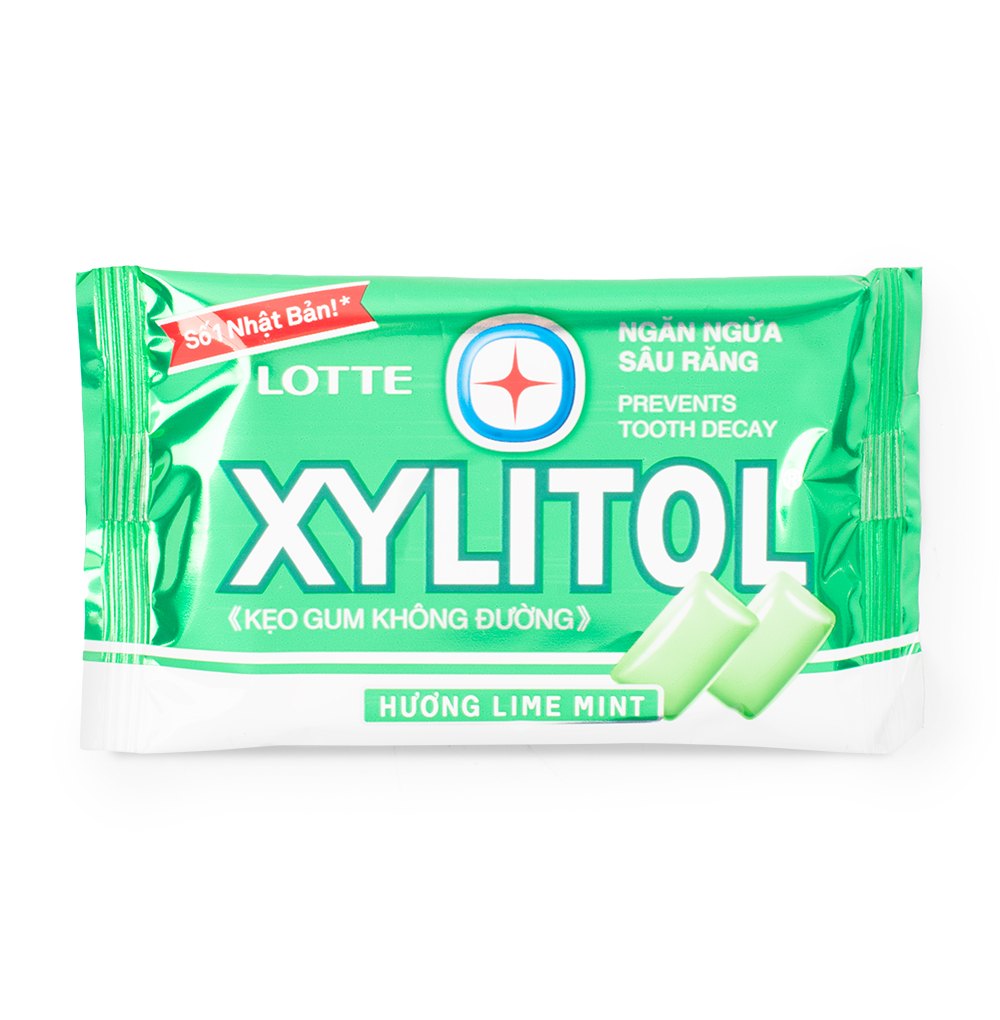
Beyond Sweetness: Other Potential Applications of Xylitol
While xylitol is primarily known as a sweetener and for its dental benefits, researchers are exploring its potential in other areas of health and wellness. What other applications might xylitol have?
Some areas of ongoing research include:
- Osteoporosis prevention: Some studies suggest xylitol may help increase bone density and strength
- Skin health: Xylitol’s moisturizing properties make it a potential ingredient in skincare products
- Nasal care: Xylitol nasal sprays may help reduce the adherence of bacteria in the nasal passages
- Gut health: Preliminary research indicates xylitol might have prebiotic effects, promoting the growth of beneficial gut bacteria
While these potential applications are intriguing, it’s important to note that more research is needed to fully understand xylitol’s effects in these areas. As with any supplement or treatment, it’s best to consult with a healthcare professional before using xylitol for purposes other than as a sweetener or for dental health.

Xylitol in Food and Consumer Products
As awareness of xylitol’s benefits grows, it’s increasingly being incorporated into a variety of consumer products. Some common items that may contain xylitol include:
- Sugar-free gum and mints
- Toothpaste and mouthwash
- Diabetic-friendly foods
- Baked goods and confectionery
- Jams and jellies
- Peanut butter and other nut spreads
- Vitamins and dietary supplements
When shopping for xylitol-containing products, it’s important to read labels carefully and be aware of potential sensitivities or allergies to other ingredients.
Xylitol: Uses and Risks
Written by Annie Stuart
- Why do people take xylitol?
- Can you get xylitol from foods?
- What are the risks of taking xylitol?
Xylitol is a carbohydrate found in the birch tree and several kinds of fruit. It has a chemical structure that looks like a cross between a sugar and an alcohol, but it is neither.
Xylitol is a sugar-free sweetener added to some foods. It’s nearly as sweet as sugar (sucrose), but has fewer calories.
People with diabetes sometimes use xylitol as a sugar substitute. Blood sugar levels stay at a more constant level with xylitol than with regular sugar. This is because it is absorbed more slowly by the body.
Some types of gum or oral care products, such as toothpaste and mouthwash, also contain xylitol. Mouth bacteria can’t use xylitol as a source of energy, so it may help prevent tooth decay and the buildup of plaque.
Researchers have studied the use of xylitol to help prevent middle ear infections in children with frequent earaches called otitis media. One way it may help is by inhibiting the growth of certain bacteria in the mouth. More studies are needed to confirm its effectiveness for this and other uses.
One way it may help is by inhibiting the growth of certain bacteria in the mouth. More studies are needed to confirm its effectiveness for this and other uses.
Optimal doses of xylitol have not been set for any condition. Quality and active ingredients in supplements may vary widely from maker to maker. This makes it difficult to set a standard dose.
Xylitol is extracted from plant material. The amount naturally found in foods is very small.
However, it is increasingly found as an ingredient (additive) in more and more foods and health products. In addition to gum, xylitol can be found in some hard candies, chocolate, table syrup, jams, jellies, baked goods, cough syrup, vitamins, some nut butters, over-the-counter medications and many others.
Xylitol is mostly safe, especially if taken in amounts found in food. The FDA has approved xylitol as a food additive or sweetener.
Side effects. If you take large amounts of xylitol, such as 30 to 40 grams, you may experience diarrhea or gas. Increasing the dose gradually may help minimize these effects.
Increasing the dose gradually may help minimize these effects.
Risks. There is not enough information to confirm xylitol’s safety in pregnant and breastfeeding women, so they should not use it for medicinal purposes. Although some animal studies have shown tumor growth resulting from high doses of xylitol over long periods, more research is needed.
If you are a dog owner, be aware that xylitol can be toxic to dogs, even in small amounts.
Interactions. Doctors don’t know of any interactions with other herbs, supplements, drugs, or foods.
Tell your doctor about any you’re taking, even if they’re natural. That way, your doctor can check on any potential side effects or interactions with medications, foods, or other herbs and supplements.
© 2023 WebMD, LLC. All rights reserved. View privacy policy and trust info
Overview, Uses, Side Effects, Precautions, Interactions, Dosing and Reviews
Overview
Xylitol is a natural sugar alcohol found in plants, including many fruits and vegetables.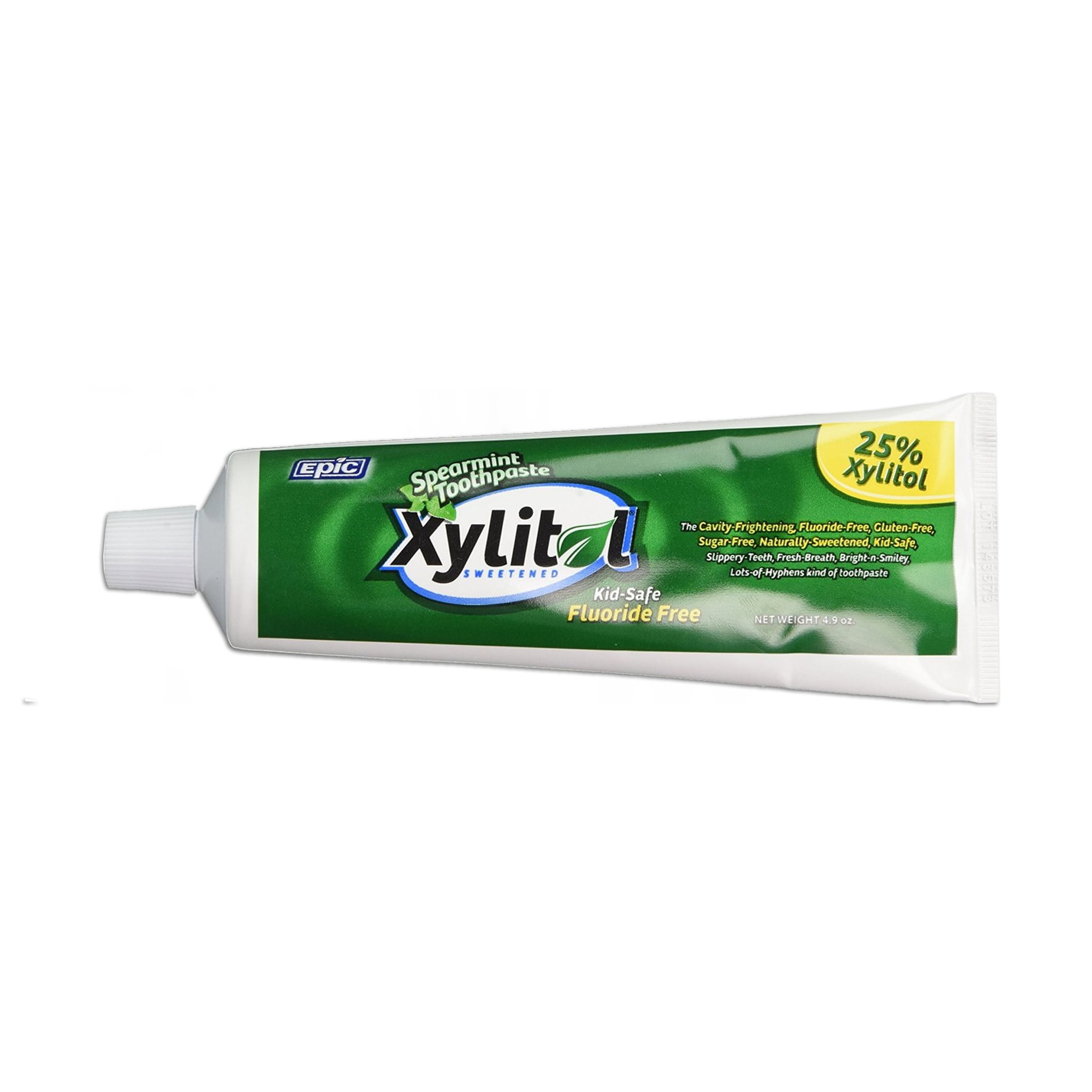 It has a sweet taste and is often used as a sugar substitute.
It has a sweet taste and is often used as a sugar substitute.
Xylitol tastes sweet but, unlike sugar, it doesn’t cause tooth decay. It reduces levels of decay-causing bacteria in saliva and also acts against some bacteria that cause ear infections. It’s widely used in “sugar-free” chewing gums, mints, and other candies.
In the US, products that contain xylitol are allowed to state that they reduce the risk for cavities. People also use xylitol to prevent tooth plaque, ear infection, dry mouth, and many other conditions, but there is no good scientific evidence to support most of these uses.
Xylitol can be toxic to dogs. If your dog eats a product that contains xylitol, take them to a veterinarian immediately.
Uses & Effectiveness ?
Likely Effective for
- Cavities. Using xylitol-containing products in the mouth, such as chewing gum, candies, and toothpaste, reduces the risk for cavities in adults and children 5 years and older. It’s unclear if it helps prevent cavities in children younger than 5 years old.

Possibly Effective for
- Ear infection (otitis media). Giving xylitol-containing products such as a chewing gum, lozenges, or syrups daily after meals to preschool children seems to reduce the risk for ear infections. But giving xylitol right after a respiratory infection has started doesn’t seem to prevent ear infections.
There is interest in using xylitol for a number of other purposes, but there isn’t enough reliable information to say whether it might be helpful.
Side Effects
When taken by mouth: Xylitol is commonly consumed in foods. It is possibly safe when used in chewing gums, candies, lozenges, toothpastes, and mouth rinses in amounts up to about 50 grams daily. It might cause diarrhea and gas in some people.
Taking high doses of xylitol is possibly unsafe. Using very high doses long-term might cause tumors.
When used as a rinse in the nose: Xylitol is possibly safe when mixed in water to clear the sinuses.
Special Precautions and Warnings
When taken by mouth: Xylitol is commonly consumed in foods. It is possibly safe when used in chewing gums, candies, lozenges, toothpastes, and mouth rinses in amounts up to about 50 grams daily. It might cause diarrhea and gas in some people.
Taking high doses of xylitol is possibly unsafe. Using very high doses long-term might cause tumors.
When used as a rinse in the nose: Xylitol is possibly safe when mixed in water to clear the sinuses.
Pregnancy and breast-feeding: Xylitol is commonly consumed in foods. There isn’t enough reliable information to know if xylitol is safe to use as medicine when pregnant or breast-feeding. Stay on the safe side and stick to food amounts.
Children: Xylitol is possibly safe when taken by mouth in amounts up to 20 grams daily for up to three years.
Interactions ?
We currently have no information for XYLITOL overview.
Dosing
Xylitol is available in many different types of products, including chewing gum, lozenges, mouth rinses, dental wipes, toothpastes, and nasal irrigation solutions. Speak with a healthcare provider to find out what type of product and dose might be best for a specific condition.
Speak with a healthcare provider to find out what type of product and dose might be best for a specific condition.
View References
CONDITIONS OF USE AND IMPORTANT INFORMATION: This information is meant to supplement, not replace advice from your doctor or healthcare provider and is not meant to cover all possible uses, precautions, interactions or adverse effects. This information may not fit your specific health circumstances. Never delay or disregard seeking professional medical advice from your doctor or other qualified health care provider because of something you have read on WebMD. You should always speak with your doctor or health care professional before you start, stop, or change any prescribed part of your health care plan or treatment and to determine what course of therapy is right for you.
This copyrighted material is provided by Natural Medicines Comprehensive Database Consumer Version. Information from this source is evidence-based and objective, and without commercial influence.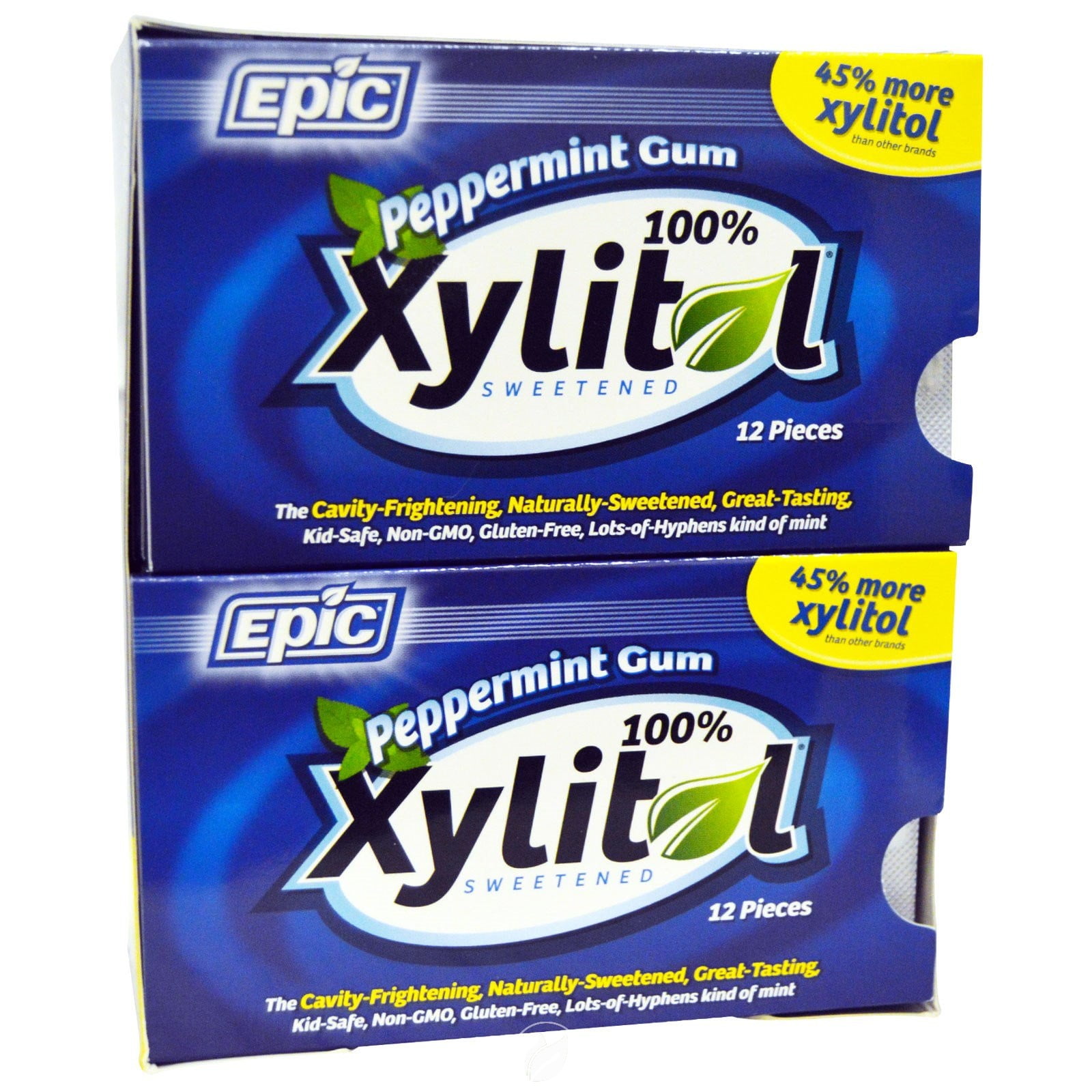 For professional medical information on natural medicines, see Natural Medicines Comprehensive Database Professional Version.
For professional medical information on natural medicines, see Natural Medicines Comprehensive Database Professional Version.
© Therapeutic Research Faculty 2020.
Xylitol: benefits, harms, efficacy, instructions, uses
Xylitol is a naturally occurring sweetener used in diabetic and dental products. Xylitol is found in berries and fruits, hardwoods and corn cobs. This substance is produced by the human body in the process of metabolism in the amount of 5-15 g per day. Xylitol has been used as a sweetener for over 50 years, during which its healing properties have been discovered and side effects have been carefully studied. Xylitol is registered in Europe as a dietary supplement E967.
Xylitol is a popular sweetener because it contains 40% fewer calories than sugar and has a low glycemic index (GI). This allows the use of the substance in diets for diabetes and obesity.
Like all polyhydric alcohols, xylitol has a sweet taste and is highly soluble in water and other liquids.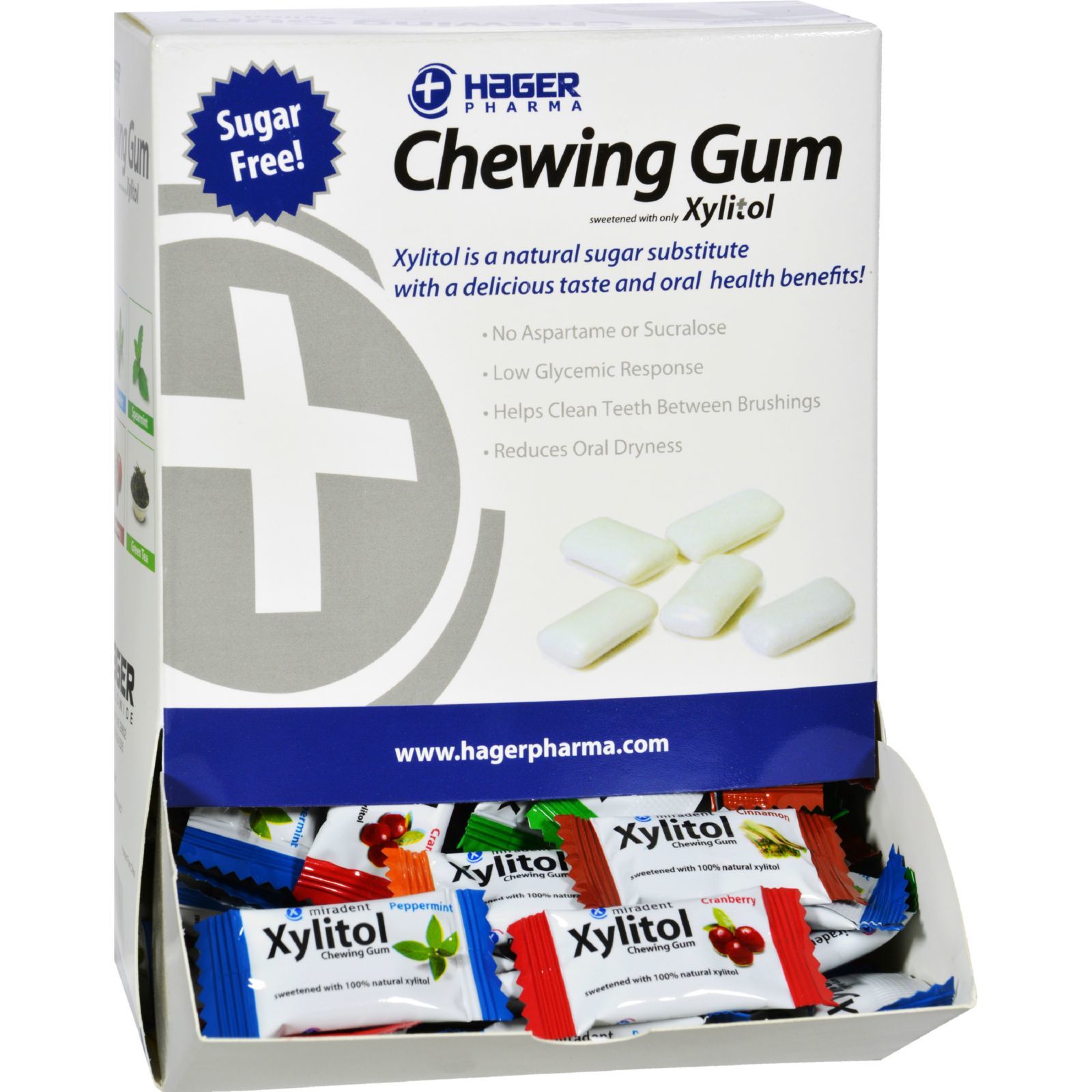 Colorless xylitol crystals look like sugar, but are smaller. Xylitol is as sweet as sugar, with a similar flavor without impurities or aftertaste. The substance has a cooling effect, a feeling of light freshness in the mouth. On the market, this sugar substitute is found in the form of powder, dragees, cubes, and is also included in mixtures.
Colorless xylitol crystals look like sugar, but are smaller. Xylitol is as sweet as sugar, with a similar flavor without impurities or aftertaste. The substance has a cooling effect, a feeling of light freshness in the mouth. On the market, this sugar substitute is found in the form of powder, dragees, cubes, and is also included in mixtures.
This sweetener is marketed under the names: Xylitol, Food Xylitol, Xylitol, XyloSweet, Polysweet, Xyla.
The use of xylitol
Xylitol is actively used in the food and pharmaceutical industries in the field of products for diabetics and means for the prevention and treatment of various diseases:
- the substance is used in the manufacture of dietary products for people with diabetes and overweight;
- In the food industry, xylitol is used as a sweetener, stabilizer, emulsifier, and moisture-retaining agent. The substance is used in the manufacture of soft drinks and sweets.
 In addition, xylitol increases the shelf life of dairy products, improves the color of food, enhances the taste;
In addition, xylitol increases the shelf life of dairy products, improves the color of food, enhances the taste; - Xylitol is included in oral hygiene products: toothpastes, dental wipes, rinses, dental floss, chewing gums and lozenges;
- xylitol is used as a sweetener in the manufacture of medicines, such as cough syrups, vitamin complexes for children, etc.;
- Xylitol chewing gums and lozenges are used to treat otitis media because chewing and sucking help the middle ear naturally clear and the substance itself inhibits the growth of pathogens;
- Xylitol is used as a laxative (when consumed in 50 grams per day) and a choleretic agent. Tubage with xylitol is considered an effective procedure for cleansing the liver and gallbladder, which can be performed at home.
Xylitol in products
Xylitol is widely used in the food industry, using it in the production of:
- ice cream
- preserves, jams, desserts
- chocolate and sweets
- cakes and pastries
- chewing gum, le dentsov, lozenges
- dairy products
- meat products industry
- carbonated soft drinks
Xylitol contains fewer calories than sugar and has a low GI, so xylitol confectionery products are primarily intended for diabetics and obese people.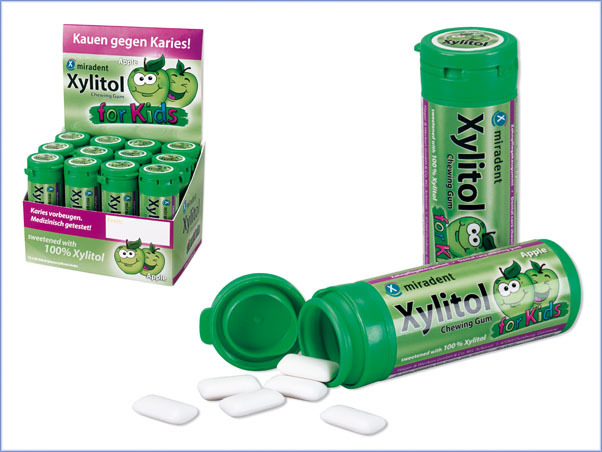 In terms of sweetness, products with xylitol are similar to those with sugar, but are considered healthier. In addition, xylitol improves the look and taste of the finished dish.
In terms of sweetness, products with xylitol are similar to those with sugar, but are considered healthier. In addition, xylitol improves the look and taste of the finished dish.
Xylitol does not degrade when heated, so it can be added to hot drinks and baked goods. The exception is yeast bread, as xylitol prevents fungi from multiplying. It is also worth considering that this sweetener does not caramelize even at very high temperatures.
Benefits of xylitol
Due to its properties, xylitol is suitable for inclusion in the diet of people with endocrine diseases, metabolic disorders. In addition, the sweetener has a beneficial effect on tooth enamel. This is due to the fact that xylitol is not absorbed by bacteria that cause caries, reduces their number, restores the acid-base balance and normal microflora in the oral cavity.
Xylitol helps the absorption of minerals: calcium and fluoride. Because of these benefits, xylitol is often added to chewing gums and dental products. The English-language resource https://www.ncbi.nlm.nih.gov contains information that xylitol is safe even for use in products and products intended for children.
The English-language resource https://www.ncbi.nlm.nih.gov contains information that xylitol is safe even for use in products and products intended for children.
Xylitol benefits:
- oral health benefits – this sweetener stops tooth decay and remineralizes (weakens) tooth enamel, improving overall oral health by more than 50%
- Xylitol has a GI of 7 (refined sugar has a 100), which means that the sweetener, although it slightly increases blood sugar, can be used in a diabetic diet
- has no effect on metabolism, is slowly absorbed by the body, almost no effect on blood glucose, therefore effective in metabolic syndrome, as well as for the prevention of type 2 diabetes
- lower calorie content compared to sugar (62% with the same sweetness)
- positive effect in the fight against acute infections of the nasopharynx and middle ear
- choleretic and laxative effect, used to cleanse the liver and intestines
- relieve symptoms of asthma
- best option for people following a diet low in carbohydrates
- increases bone density tissues, which makes it effective for the treatment of osteoporosis
- with regular use prevents the development of fungal infection in the oral cavity and gastrointestinal tract, is used as an adjuvant in the complex treatment of candidiasis
- improves digestion by increasing the secretion of gastric juice
- is gentle on the intestines
- improves the absorption of B vitamins, which are extremely important for the normal functioning of the body
Instructions for using xylitol
At home, xylitol is used as a sweetener in cooking various dishes , food preservation. The use of this substance is effective for blind probing and liver cleansing. Although both procedures can be performed independently, consultation with a gastroenterologist is recommended, as there are contraindications.
The use of this substance is effective for blind probing and liver cleansing. Although both procedures can be performed independently, consultation with a gastroenterologist is recommended, as there are contraindications.
Blind probing with xylitol
The procedure is indicated for congestion in the gallbladder, digestive problems, skin diseases. Blind probing (tubage) helps to expand the biliary tract and at the same time contract the gallbladder, which contributes to the outflow of stagnant bile. In addition, there is a mild laxative effect.
Blind probing is performed no more than once every 20-30 days, on an empty stomach. It is advisable to do this in the morning upon waking up. In 250 ml of mineral water it is necessary to dissolve 5 g of xylitol. After that, you need to prepare and ingest one of the following mixtures: 9through twenty minutes after drinking the xylitol mixture again dissolved in water in the same proportions (5 g per 250 ml), taken and lying in bed on the right side for 2 hours with a warm heating pad applied to the liver area.
Xylitol Liver Cleanse
In addition to blind probing, xylitol is used to cleanse the liver. The procedure increases the production of bile, which naturally unclogs the bile ducts. As a result, the state of the liver, gallbladder and biliary tract, kidneys is normalized.
If the liver cleanse is being performed for the first time or a long time has passed since the previous one, it is recommended to repeat the procedure at least six times every two to three days. In the future, liver cleansing is carried out once a week or as needed.
The liver is cleansed with rosehip infusion with the addition of xylitol. To prepare a drink you will need:
- 3 tbsp. l. rose hips
- 2 cups boiling water
- 3 tbsp. l. xylitol
Pre-washed and crushed berries should be placed in a thermos, pour boiling water over and left to infuse overnight. In the morning, xylitol is dissolved in half of the infusion and the mixture is drunk on an empty stomach.
After twenty minutes, you need to take the remaining infusion from the thermos without adding xylitol to it and wait another forty minutes. After this time, you can have breakfast. It is important that the food on this day is dietary, light, and the fluid intake is high. A good option would be to drink rosehip infusion, herbal tea, for example, you can brew currant and raspberry leaves.
Moderate exercise is also appropriate. Since the procedure has a pronounced laxative effect, it is worth spending this day at home.
Preservation of products with xylitol
The process of preparing jam and other preparations is similar to the usual one. Xylitol is added to canned food in the following proportions (per 1 kg of berries or fruits):
- berry jam – 0.9-1.2 kg
- fruit jam – 700 g0020
- marmalade – 100 g
- compote – 350 g of xylitol per 1 liter of water
The amount of xylitol required is calculated approximately and depends on the degree of acidity of the berries or fruits. The more acidic the raw material for canning, the more sweetener will be required. Store preparations with xylitol in a cool place for no more than a year.
The more acidic the raw material for canning, the more sweetener will be required. Store preparations with xylitol in a cool place for no more than a year.
Xylitol Gum
Xylitol Gum is a great alternative if you can’t brush your teeth after meals. Thanks to chewing, the production of saliva increases, which already has a positive effect on the acid-base balance in the oral cavity. And the presence of xylitol gums doubles the beneficial effect.
To benefit from chewing gum with xylitol, you need to follow the recommendations of dentists:
- use gum only after eating, as chewing stimulates increased secretion of gastric juice
- chew no more than 10 minutes, while the pleasant taste of the gum remains
- do not use more than one plate or two pads after each meal
Side effects and contraindications
Xylitol is considered safe if the daily requirement is not to exceed 50 g. Excessive consumption leads to digestive problems. Also, do not introduce xylitol into the diet immediately in high doses – it is better to do it gradually, giving the body time to get used to it.
Also, do not introduce xylitol into the diet immediately in high doses – it is better to do it gradually, giving the body time to get used to it.
Uncontrolled use of xylitol may cause the following side effects:
- allergic reactions, in particular skin rashes
- a slight increase in blood glucose and insulin, which is undesirable in certain types of diabetes mellitus
- ineffective diet for people lose weight, since the calorie content in xylitol, although less than in sugar, remains quite high. This means that at high doses, this sugar substitute, on the contrary, will contribute to weight gain
- increases appetite and cravings for sweets, which also negatively affects the process of losing weight
- laxative effect
- digestive problems (nausea, flatulence, diarrhea)
- disturbance of the normal intestinal microflora
- body
- interfere with the absorption of nutrients from food
- toxic effects on dogs up to death
Contraindications for the use of xylitol include:
- individual intolerance to the substance
- gastrointestinal diseases
- epilepsy
- pregnancy and breastfeeding
Consumption of xylitol, like any other sweetener, does not cause problems when used correctly. Dosage control is the basis of good health and the absence of undesirable consequences. If side effects appear, for them to disappear, it is enough to remove xylitol from the diet.
Dosage control is the basis of good health and the absence of undesirable consequences. If side effects appear, for them to disappear, it is enough to remove xylitol from the diet.
Xylitol or fructose
Xylitol is a polyol, fructose is a monosaccharide. Both sweeteners are of natural origin and are made from vegetable raw materials, but their characteristics are very different: 223
diabetic diet, since stronger xylitol raises blood sugar levels. Also, it is not suitable in the fight against excess weight.
Features fructose:
- higher sweetness ratio
- contains more calories
- higher GI
- negative effect on the liver
- causes a constant feeling of hunger, increases appetite
Features of xylitol:
- 900 19 does not harm teeth
- less calories
- lower GI
- has a healing effect
Although both are used in the food industry and are often included in dietary products, it is better to choose products with xylitol. Of course, fructose is useful, but only if you do not exceed the daily allowance. Unfortunately, this is not always the case in real life, as many foods contain added sugar. And it consists of fructose by more than 50%.
Of course, fructose is useful, but only if you do not exceed the daily allowance. Unfortunately, this is not always the case in real life, as many foods contain added sugar. And it consists of fructose by more than 50%.
Xylitol or sorbitol?
Xylitol and sorbitol are considered natural sugar substitutes and are similar in properties. This can be seen in more detail in the table:
| Properties | Xylitol | Sorbitol |
| Sweetness coefficient | 1 | 0.6 9 0223 |
| Calories per 100 g | 243 | 260 |
| Glycemic index | 7 | 4 |
| Daily value, g | 50 | 70 |
| Heat treatment | possible | possible |
| Negative effect on teeth | no | no |
These sweeteners, like all polyhydric alcohols do not harm the teeth and have a slight refreshing effect.
Sorbitol features:
- low glycemic index
- lower degree of sweetness with almost equal calories. This means that when adding sorbitol to a dish, more will be needed, and therefore the food will be more high-calorie
- strong laxative effect
- beneficial effect on the intestinal microflora, its normalization during long-term consumption. Due to this, sorbitol is often found in medicines intended for the treatment of diseases of the gastrointestinal tract
- sorbitol is less toxic to dogs and, if ingested by a pet, leads only to digestive disorders
Features of xylitol:
- higher sweetness ratio
- less pronounced laxative effect
- not only preventive, but also curative effect on tooth enamel
- better absorption by the body
- more pleasant taste
Both substances are freely sold in pharmacies and shops, and their cost is relatively low. If we compare the benefits and harms of xylitol and sorbitol, the scales will be approximately equal. Both sweeteners are a good option for diabetics, although not the best.
Both sweeteners are a good option for diabetics, although not the best.
Views: 71 666
where to use, side effects of xylitol
#this is interesting
#childhood
Xylitol benefits for teeth
Xylitol (or xylitol) is a natural sweetener that has long attracted the attention of dentists for its beneficial properties. As a rule, it is obtained from birch and corn. Unlike artificial substitutes, xylitol has virtually no side effects. In addition, it does not provoke sharp jumps in sugar (it is even added to products for diabetics in the form of supplement E967) and is able to restrain weight gain. Xylitol contains 40% fewer calories than regular sugar. Meanwhile, in terms of sweetness, they are quite comparable.
Xylitol contains 40% fewer calories than regular sugar. Meanwhile, in terms of sweetness, they are quite comparable.
It is known that sugar is the main source of energy for potentially dangerous bacteria living in the oral cavity. Among them are streptococci. They process sugar from food and release acid that destroys tooth enamel. But xylitol cannot be absorbed by microorganisms. This is due to the benefits for the teeth of products with xylitol. Thanks to them, acid is not released, and harmful bacteria eventually die of starvation. Result: thanks to the use of xylitol, the number of bacteria is reduced and plaque is reduced. This is an effective way to keep your teeth healthy.
This idea is also supported by scientists who have proven how useful xylitol is for teeth. For example, a large-scale experiment that took place in Finland showed that the compound prevents the development of caries. The effect is achieved through a complex impact. In addition to killing bacteria, xylitol also benefits teeth by preventing microorganisms from sticking to the surface of teeth. Second, foods with xylitol, like chewing gum, increase salivation. And saliva reduces acidity in the oral cavity, cleans the surface of the teeth and promotes enamel remineralization. Saliva contains calcium and phosphate, which restore enamel.
Second, foods with xylitol, like chewing gum, increase salivation. And saliva reduces acidity in the oral cavity, cleans the surface of the teeth and promotes enamel remineralization. Saliva contains calcium and phosphate, which restore enamel.
Since xylitol reduces bacterial plaque buildup throughout the mouth, it may prevent the development of inflammatory gum disease. Xylitol is especially beneficial for children’s teeth.
Where
is used
Xylitol is widely used in food and oral care products. It can be found in chewing gum, toothpastes, gels for teeth, various sprays, mouth rinses, floss (dental) floss, wipes. Xylitol retains the pleasant taste of the product with benefits for the teeth. It has been found that people who use xylitol chewing gum have slower progression of caries. Scientists also calculated that regular use of chewing gum with xylitol reduces the risk of caries by 59%. To achieve the positive effect of xylitol on teeth, it is recommended to chew gum for about 20 minutes.
Xylitol Benefits for Children’s Teeth
Scientists say children’s love of sweets is an evolutionary mechanism at work. It helps to get maximum energy and protects against poisonous foods, which are often bitter. But excessive consumption of sweets can lead to the development of tooth decay. Dentists insist: prevention should begin even before the appearance of molars. Scientists recommend starting to use products with xylitol at least a year before the eruption of permanent teeth.
Products with xylitol can be consumed from 3 years. For xylitol for children’s teeth to have a real effect, 2-3 gum pads or 1 lozenge with 100% xylitol per day are enough.
Suggested Use
Xylitol is definitely good for teeth. But each product has its own recommendations for use. The maximum permissible norms are prescribed in the instructions or on the packaging. So, the daily norm of xylitol for an adult is approximately 5 chewing gum pads with this substance.


 In addition, xylitol increases the shelf life of dairy products, improves the color of food, enhances the taste;
In addition, xylitol increases the shelf life of dairy products, improves the color of food, enhances the taste;